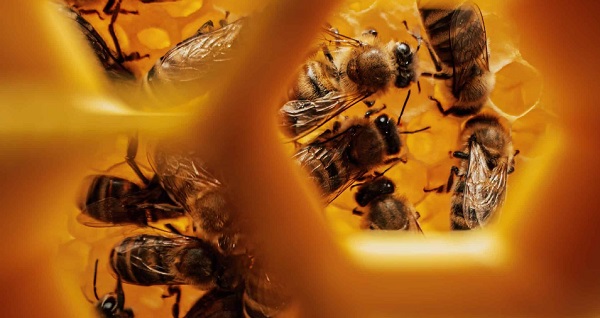Agriculture
Diesel won’t be easily replaced on the farm

From the Frontier Centre for Public Policy
By Brian Zinchuk, contributor to the Frontier Centre for Public Policy.
I was out at the cabin, trying to trim the reeds and weeds along the water, when I came across a stark reminder of how good we have it because of fossil fuels.
I was using the electric whipper snipper when the reel head decided to disassemble itself. But I still had a lot of weeds that needed to be cut.
So I went into the shed and dug out the old scythe Uncle Larry, the previous owner, put in there some time in the preceding 40 years. That scythe likely dates back to the 1930s, making it somewhere around 90 years old. A blacksmith hand-made that scythe.
I took a palm sander to it and put a usable edge on it.
My late grandfather, Harry Zinchuk, showed me how to use a scythe some 30 years ago, when I was around 18. I think he used one when he was 18, around 1935, twisting right to left. My technique was awful, my tool old and probably too dull. But I was able cut down about 40 square feet of reeds in a few sweat soaked minutes.
And with each stroke, I kept wondering how entire teams of men would go into the fields, slicing down crops entirely by hand. It would take days for them to do 160 acres.
It made me think of farming today. A few years ago I was hired to video and photograph a year on the farm for Jason and Sherrill LeBlanc of Estevan. They had their then 14-year-old daughter driving a mammoth Case combine, and doing so well. I wonder how much more productive one girl driving a combine was compared to teams of men with scythes, then stookers (a person who bends over and picks up the loose wheat that had been cut down), then threshing crews.
That same farm now continuously crops over 100 quarters (16,000 acres) of land, harvesting with a crew of around 20 people. They usually accomplish all of that in just a few weeks.
My grandfather worked on those threshing crews, from sun up to sun down. Lard sandwiches were his fuel. Hay fed the horses. How much more efficient are diesel combines now?
For some real-world explanations of this, I strongly encourage reading some of the books by Vaclav Smil, the University of Manitoba distinguished professor emeritus whose prolific writings on energy are a true wake-up call. Last summer I got through How the World Really Works: The Science Behind How We Got Here and Where We’re Going. Other titles of his I hope to get through are Energy and Civilization: A History, Invention and Innovation: A Brief History of Hype and Failure and Power Density: A Key to Understanding Energy Sources and Uses. The general thrust is how mankind’s mastery of energy supplies have allowed us to live the lives we currently enjoy.
Some people seem to think we can easily replace diesel with electric when it comes to farm equipment. One of those people is Canada’s Minister of Natural Resources Jonathan Wilkinson. I was present when he was in Kipling, Saskatchewan, on June 29, to announced $50 million for a wind power project. A local reporter asked him about electric tractors.
Focusing on cost of operations for farmers with regards to the Clean Fuel Regulations, the reporter noted, “That’s going to make life harder for them because, you know, the bottom line is there is no such thing in Saskatchewan right now as an [electric] tractor. You know, it’s just not feasible. And so, as they’re making this transition, what sort of investment is the federal government prepared to get to that?”
Wilkinson replied, “I think the first thing that you said about it’s just not feasible, people would have said exactly the same thing about an electric vehicle 10 years ago, and they would have said the same thing about an electric pickup truck. And now those are available to buy them. There are companies that are working on large scale equipment, including equipment for farming, that will be electric on a go-forward basis. So those kinds of solutions are actually driven by regulations like this. But what I would say is, and I do say, that this will create jobs and economic opportunity, including in the agricultural sector, because you use canola, and soy, and often agricultural residuals to make the products that are going to be driven by this whole thing. So, there are benefits associated with it.”
Electric tractors, eh? Just how large batteries will they require? Will they be the size of an air seeder tank, and pulled behind like a coal tender from locomotives of old? Do you need two, with someone towing one out to the field after charging, to allow continual operations?
Because that’s what farmers do these days. Jason’s seeding crew has their turnarounds to fuel, service, and refill the seeder with seed and fertilizer down to 18 minutes. They run shifts around the clock, many miles from home. And they have two mammoth Case 620 Quadtrac tractors doing so, plus an older tractor pulling a land roller, as well as two sprayers. Where and when are they supposed to charge up? How long will that take their equipment out of operation?
Are they just supposed to find the nearest power pole and hook up some big booster cables?
Farming requires enormous amounts of energy – a lot more than a lard sandwich or EV charger. And diesel is the answer, and will be for a long time to come. Sorry, Mr. Minister. Electric tractors won’t be cutting it anytime soon.
Brian Zinchuk is editor and owner of Pipeline Online, and occasional contributor to the Frontier Centre for Public Policy. He can be reached at [email protected].
Agriculture
Unstung Heroes: Canada’s Honey Bees are not Disappearing – They’re Thriving

Canada’s Bee Apocalypse began in 2008. That was the year the Canadian Association of Professional Apiculturists (CAPA) first reported unusually high rates of winter bee colony losses. At 35 percent, the winter die-off that year was more than twice the normal 15 percent rate of attrition.
“Successive annual losses at [these] levels … are unsustainable by Canadian beekeepers,” the CAPA warned. This set off an avalanche of dire media reports that now appear on a regular basis. Among the many examples over the years: Huge Honey Bee Losses Across Canada” and “Canada’s bee colonies see worst loss in 20 years”. As each of these stories reminds readers, the disappearance of honey bees will doom our food supply, given their crucial role in pollinating crops including canola, soyabeans, apples, tomatoes and berries.
This year the black-and-yellow striped Cassandras are back at work, with headlines shouting “Scientists warn of severe honeybee losses in 2025” and “The Bees are Disappearing Again”. If it’s spring, the bees must be disappearing. Again.
It is, however, mathematically impossible for any species to be in an allegedly continuous and calamitous state of decline over nearly two decades and never actually reduce in number. For despite the steady supply of grave warnings regarding their imminent collapse, Canada’s bees are actually buzzing with life.
In 2007, according to Statistics Canada, there were 589,000 honey bee colonies in Canada,; in 2024, they reached 829,000, just shy of 2021’s all-time high of 834,000. Figuring a conservative summertime average of 50,000 bees per colony, that means there are approximately 12 billion more honey bees in Canada today than when the Bee Apocalypse first hit.
As for beekeepers, their numbers have also been growing steadily, and now stand at 15,430 – the most recorded since 1988. As CAPA’s report acknowledges, “the Canadian beekeeping industry has been resilient and able to grow, as proven by the overall increase in the number of bee colonies since 2007 despite the difficulties faced every winter.”
How is this possible? As is usually the case where there’s a need to be filled, the market holds the answer.
It is true that Canadian honey bees face a long list of threats and challenges ranging from mites and viruses to Canada’s harsh winters. It is also true that they perform a crucial service in pollinating crops, the value of which is estimated at $7 billion annually. However, this underscores the fact that bees are a livestock bred for a particular agricultural purpose, no different from cattle, chickens or pen-raised salmon. They are a business.
And in spite of its alleged status as an environmental totem, the honey bee isn’t even native to North America. It was first imported by European settlers for its honey-making abilities in the 1600s. Since then, it has been cultivated with deliberate commercial intent – allowing it to outcompete native pollinators such as bumble bees and butterflies even though it is poorly suited to the local winter. (This highlights the irony of all those native-plant pollinator gardens virtuously installed in neighbourhoods across Canada that end up supporting an invasive honey bee population.)
The significance of the bee economy means that when a beehive collapses over the winter for whatever reason, beekeepers have plenty of motivation to regenerate that colony as swiftly as possible. While hives can create their own queens over time, this can be a slow process given the cold Canadian climate. The better option is to simply buy a new queen from a warmer country.
In 2024, Canada imported 300,000 queens worth $12 million, mostly from the U.S., Italy, Australia and Chile. That works out to $40 each. In a miracle of nature, each of these new queens can lay up to 2,500 eggs a day, and each egg takes just two to three weeks to reach full maturity as a worker or drone. It is also possible to import entire “bee packages” that include a queen and 8,000 to 10,000 bees.
As a result, even a devastating 50 percent winter loss rate, something that has occurred only rarely in Canada in individual provinces and never nationally, isn’t necessarily fatal to any beekeeping operation. The beekeeper can purchase imported queens in April, split their existing colonies and be back in business by May or June.
And regardless of the honey bee’s apparent difficulties with Canada’s unforgiving weather (efforts are ongoing to breed a hardier Canadian variant), there’s no shortage of bees worldwide. Earlier this year, the German statistical agency reported the global beehive count rose from 69 million in 1990 to 102 million in 2023. Another study looking back to 1961 by New Zealand researchers found the number of honey bee colonies has “nearly doubled” over this time, while honey production has “almost tripled.” As the New Zealand report observes, “Headlines of honey bee colony losses have given an
impression of large-scale global decline of the bee population that endangers beekeeping, and that the world is on the verge of mass starvation.” Such claims, the authors note, are “somewhat inaccurate.” In truth, things have never been better for bees around the world.
Here in Canada, the ability to import queens from other countries, together with their prodigious reproductive capabilities, backstops the amazing resiliency of the bee industry. Yes, bees die. Sometimes in large numbers. But – and this is the bit the headlines always ignore – they come back. Because the market needs them to come back.
If there is a real threat to Canada’s bee population, it’s not environmental. It’s the risk that unencumbered trade in bees might somehow be disrupted by tariffs or similar bone-headed human interventions. Left on their own, bees have no problem keeping busy.
The longer, original version of this story first appeared at C2CJournal.ca
Agriculture
Canada Greenlights Mass Culling of 400 Research Ostriches Despite Full Recovery from Bird Flu Months Ago

 Nicolas Hulscher, MPH
Nicolas Hulscher, MPH
Federal court upholds CFIA’s reckless cull order—setting a dangerous precedent for the unscientific mass depopulation of genetically important animals.
In March, I interviewed Katie Pasitney of Universal Ostrich and Connie Shields to discuss the alarming implications of the Canadian Food Inspection Agency (CFIA) order to cull 400 research ostriches at Universal Ostrich Farm in British Columbia over bird flu:
Canada Orders Mass Culling of 400 Research Ostriches Over Bird Flu, Refuses to Test Surviving Birds for Natural Immunity
·The Canadian Food Inspection Agency (CFIA) has ordered the culling of 400 ostriches at Universal Ostrich Farm in British Columbia, citing concerns over H5N1 bird flu. However, this decision is not based on sound science and could have serious consequences for both food security and medical research.
Universal Ostrich Farm is a research facility focused on studying the unique antibody-producing capabilities of ostriches. Their research has demonstrated potential in neutralizing viruses, bacteria, and even COVID-19, making it an important contribution to medical science.
In December 2024, the CFIA claimed that two deceased ostriches—which had been lying outside for over 16 hours—tested positive for H5N1 via PCR testing. Just 41 minutes after receiving these results, the CFIA signed an order to cull the entire flock.
The CFIA initially granted the farm an exemption, recognizing the birds as “genetically important.” Later, without clear justification, they reversed this decision, ordering their destruction.
Despite the importance of this research, the CFIA has refused to conduct further testing on the birds and has banned the farm from conducting its own tests, under threat of heavy fines and possible imprisonment. Why is the Canadian government refusing to study the potential antibodies ostriches have developed against H5N1 bird flu?
On January 31, 2025, a court granted a temporary stay of execution, halting the cull. However, the CFIA is appealing this decision, which means the culling could still proceed.
Today, we have received news that the reckless mass cull order will proceed despite their ostriches having already recovered months ago and developed natural immunity against H5N1:

Official Announcement: Federal Court Decision in Universal Ostrich Farms Inc. v. Canadian Food Inspection Agency
Dear friends and supporters,
We are absolutely devastated to share today’s Federal Court decision, issued on May 13, 2025. The court ruled in favour of the Canadian Food Inspection Agency (CFIA), upholding their order to destroy our beloved ostriches and rejecting our plea to save them.
The court’s decision accepted the CFIA’s justification under the Health of Animals Act and their use of the Stamping-Out Policy, which mandates the destruction of animals to control disease outbreaks, regardless of their health status. The court confirmed the CFIA’s approach, prioritizing trade obligations over the welfare of our animals.
In addition, we’ve been ordered to pay $15,000 in CFIA’s legal costs. You can read the full decision here: (2025 FC 878). https://saveourostriches.com/wp-content/uploads/2025/05/JR-T-294-25-and-T-432-25-Final.pdf
We are heartbroken by this outcome and uncertain about the future of our farm. As we navigate this incredibly difficult time, we ask for your patience and continued support. If you are able, please consider making a donation to help us manage the financial and emotional toll this has taken.
Thank you,
Universal Ostrich Farm
http://SaveOurOstriches.com
This deeply misguided decision sets a dangerous precedent for the Canadian government to recklessly depopulate animals at will.
By upholding the CFIA’s reckless cull order, despite the ostriches’ recovery and natural immunity, the court has prioritized trade protocols over scientific inquiry, animal welfare, and the advancement of life-saving medical research.
Epidemiologist and Foundation Administrator, McCullough Foundation
www.mcculloughfnd.org
Please consider following both the McCullough Foundation and my personal account on X (formerly Twitter) for further content.
-

 Alberta1 day ago
Alberta1 day agoAlberta judge sides with LGBT activists, allows ‘gender transitions’ for kids to continue
-

 Crime18 hours ago
Crime18 hours agoNational Health Care Fraud Takedown Results in 324 Defendants Charged in Connection with Over $14.6 Billion in Alleged Fraud
-

 Business7 hours ago
Business7 hours agoElon Musk slams Trump’s ‘Big Beautiful Bill,’ calls for new political party
-

 Business1 day ago
Business1 day agoCanada Caves: Carney ditches digital services tax after criticism from Trump
-

 Business1 day ago
Business1 day agoMassive government child-care plan wreaking havoc across Ontario
-

 Alberta1 day ago
Alberta1 day agoAlberta Independence Seekers Take First Step: Citizen Initiative Application Approved, Notice of Initiative Petition Issued
-

 Health18 hours ago
Health18 hours agoRFK Jr. Unloads Disturbing Vaccine Secrets on Tucker—And Surprises Everyone on Trump
-

 Censorship Industrial Complex6 hours ago
Censorship Industrial Complex6 hours agoGlobal media alliance colluded with foreign nations to crush free speech in America: House report








